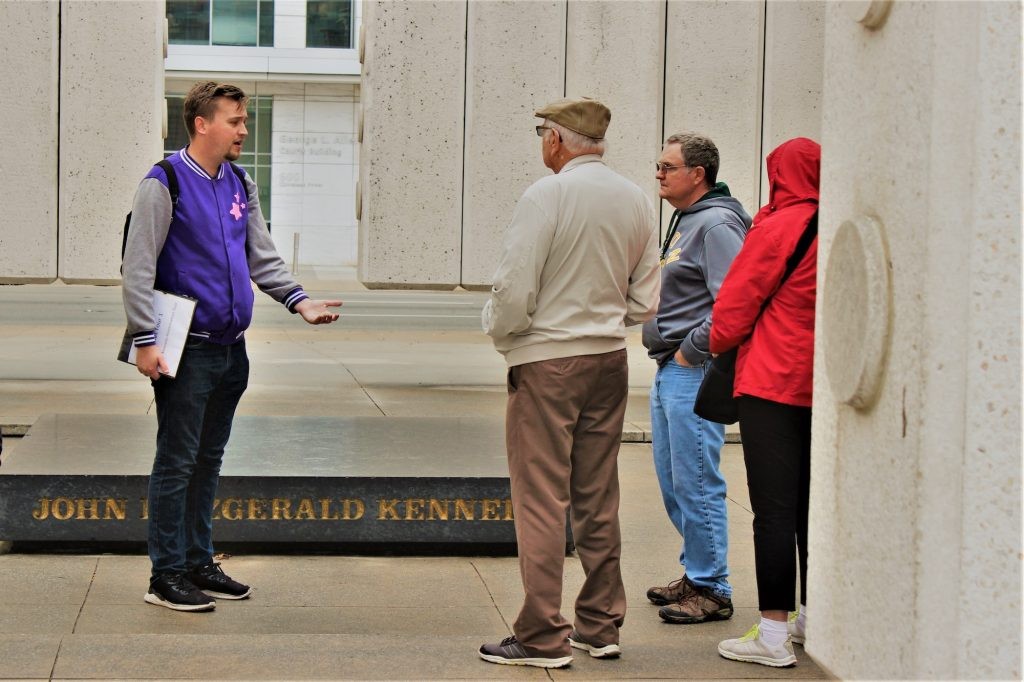Tipping a tour guide in the USA is customary to show appreciation for their service, and understanding appropriate gratuity amounts can enhance your travel experience. CONDUCT.EDU.VN offers comprehensive guidance on tipping etiquette, providing clarity and confidence in various situations. Explore further to discover best practices and ensure your gestures of gratitude are well-received, acknowledging exceptional service and creating positive interactions through tipping practices and gratuity customs.
1. Understanding Gratuities for Tour Guides
Gratuity, essentially a tip, is a voluntary payment offered to service workers as a token of appreciation for exceptional service. Originating from the Latin word “gratus,” meaning thankful, it’s a tangible way to express gratitude. In the hospitality sector, tipping is standard practice for roles like servers, bartenders, and tour guides. Tour guides, who enrich our travel experiences with their knowledge and enthusiasm, often rely on tips as part of their income, particularly in the United States. Knowing when and how much to tip demonstrates respect for their profession and enhances the overall experience for both the guide and the traveler.
Alt Text: A tip jar on a counter, symbolizing the act of tipping service workers.
2. The Etiquette of Tipping Tour Guides: A General Overview
In the United States, tipping tour guides is generally expected, reflecting a culture where gratuities supplement wages. While not obligatory, a tip is a standard way to acknowledge a tour guide’s efforts and expertise. Exceptions exist, such as when gratuity is included in the tour package or if the service is unsatisfactory. However, in most cases, showing appreciation through a tip is a thoughtful gesture. CONDUCT.EDU.VN provides detailed guidelines on navigating these situations, ensuring you’re well-informed about appropriate tipping etiquette in various service industries and cultural contexts.
3. Tipping Customs: USA Versus Europe
Tipping norms differ significantly between the United States and Europe. In the U.S., tipping is ingrained in the service culture, with gratuities expected for a wide range of services. European tipping customs are more restrained; service staff often receive a fair wage, reducing the reliance on tips. When it comes to tour guides, while tipping isn’t mandatory in either region, it’s more anticipated in the U.S. A smaller tip in Europe can be sufficient, particularly for shorter tours. However, globalization has led to increased familiarity with tipping among European tour guides, especially in popular tourist destinations. Remember that tipping is always a sign of appreciation for excellent service, regardless of location.
Alt Text: A tour guide pointing towards the Eiffel Tower, illustrating the cultural context of European tours.
4. Determining the Appropriate Tip Amount for Tour Guides
Deciding how much to tip a tour guide involves several considerations, primarily the quality of service. While tipping is discretionary, guidelines can assist in determining a suitable amount. For exceptional service, consider tipping between 15% and 20% of the tour cost. Standard service typically warrants a 10% to 15% tip, whereas inadequate service might justify a smaller token of appreciation or no tip at all. Factors like the length and type of tour can also influence the amount. Ultimately, the decision rests with the individual, reflecting their satisfaction with the experience.
5. Practical Tipping Guidelines for Various Tours
| Tour Type | Suggested Tip | Considerations |
|---|---|---|
| Walking Tour (2-3 hours) | $5 – $10 per person | Quality of information, engagement of the guide, group size. |
| Day Tour (6-8 hours) | $10 – $20 per person | Length of tour, transportation included, meals provided, depth of knowledge shared. |
| Private Tour | 15-20% of tour cost | Personalization of tour, exclusivity, transportation included. |
| Bus Tour | $5 – $10 per person | Comfort of bus, additional services provided, driver included. |
| Free Walking Tour | $10 – $20 per person | Based on perceived value, engagement of the guide. |




6. Timing Your Tip: When to Show Your Appreciation
The most common time to tip your tour guide is at the tour’s conclusion. As you express your gratitude and bid farewell, you can discreetly hand the tip to the guide. Some prefer a subtle approach, like slipping the money during a handshake. However, a straightforward handover is equally acceptable. The key is to ensure the gesture feels sincere and appreciative. This timing aligns with standard tipping etiquette, providing a clear signal of your satisfaction with the service.
7. Navigating the Cashless World: Alternative Tipping Methods
In today’s increasingly cashless society, many travelers find themselves without physical money. Recognizing this trend, most tour guides offer alternative payment methods for gratuities. Options like Venmo, Zelle, or even QR codes are becoming common, allowing for seamless digital tipping. It’s perfectly acceptable to inquire about preferred electronic payment methods. By offering various options, guides ensure guests can easily express their appreciation, even without cash.
8. Tipping the Driver on a Bus Tour
On bus tours, tipping the driver is often customary in addition to the tour guide. Typically, a tip of $5-$10 per guest is considered appropriate to cover both the guide and the driver. In many cases, the guide will split the tips with the driver, so giving your tip directly to the guide is often the simplest approach. In Europe, tipping the bus driver is also customary, with around 5%-10% of the tour price being a good rule of thumb. Always ensure that your appreciation extends to all members of the team contributing to your experience.
9. Private Tour Tipping Etiquette
Alt Text: Hands exchanging money, symbolizing a tip given to a tour guide.
Private tours offer a more personalized experience, and tipping etiquette remains much the same. While some may be less inclined to tip on private tours, it’s a thoughtful gesture to acknowledge the guide’s time and effort, especially if they’ve exceeded expectations. As private tours often come with a higher price tag, the tip amount typically reflects a percentage of the total cost, generally between 15% and 20%. For extended private driving tours, $50-$100 in tips is common, especially for larger groups. Always consider the level of service and personalization when deciding on the appropriate tip amount.
10. “Free” Tours: Understanding the Tipping Expectation
“Free” walking tours operate on a tip-based model, meaning the guides rely on gratuities for their income. While the tour itself may be advertised as free, it’s essential to factor in the expected tip when planning your budget. A general guideline is to tip the guide as you would for a standard tour, considering the length, quality, and your overall satisfaction. Some tours may explicitly state that tips are not accepted, often organized by local tourism organizations. However, in most cases, offering a tip is not only customary but also essential to supporting the guides who provide these experiences.
11. Inclusions: Determining if Gratuity is Already Factored In
Before assuming gratuity is required, check whether it’s already included in your tour package. Multi-day excursions, particularly those including accommodations and meals, sometimes factor in gratuities. Tour operators should clearly state whether gratuities are included or not. If unsure, don’t hesitate to ask before or after booking to avoid any surprises or misunderstandings. Transparent communication ensures a smooth and enjoyable experience for both travelers and tour guides.
12. What To Do When The Tour Doesn’t Meet Expectations
If the tour did not meet your expectations, tipping becomes discretionary. Gratuity is intended as a reward for excellent service, so it’s acceptable to forgo tipping if the experience was unsatisfactory. However, communicate your concerns to the tour operator or guide, providing constructive feedback to help them improve. While withholding a tip sends a clear message, addressing the issue directly can lead to resolution and better future experiences.
13. Family Considerations: Tipping with Children in Your Group
When traveling with a group that includes children, tipping remains a consideration. While it’s not generally expected to tip extra for infants, older children often require the guide’s attention and are typically factored into the tipping amount. Larger families may consider a sliding scale, adjusting the tip to a comfortable level that reflects the overall service provided to the entire group. As with all tipping scenarios, personal discretion is key.
14. Seeking Clarity: When in Doubt, Ask
If you find yourself uncertain about tipping customs, the best approach is simply to ask. Whether it’s a tour or another service, inquiring about tipping protocols can clarify expectations and alleviate any concerns. Reputable sources, such as the Emily Post Institute, support the practice of asking in advance to ensure you’re prepared and informed. This proactive approach demonstrates respect for local customs and helps avoid any awkward situations.
15. The Impact of Tipping: Perspectives from Tour Guides
Tipping plays a vital role in the income and morale of tour guides. As Jonathan Mannato, a tour guide in NYC, explains, “It is very appreciated when we receive tips…It made me as a guide feel valued.” Cristina Carrisi, a tour guide in Barcelona, adds, “A tip shows that I did an outstanding job, that I exceeded guests’ expectations.” These sentiments underscore the importance of tipping as a tangible expression of appreciation, reinforcing the guide’s dedication and enhancing their sense of value.
Alt Text: The Eiffel Tower in Paris, symbolizing memorable tour experiences and the value of tour guides.
16. Conclusion: Final Thoughts on Tour Guide Gratuities
Navigating the nuances of tipping tour guides involves understanding cultural norms, service quality, and personal discretion. By familiarizing yourself with these guidelines, you can confidently express your appreciation and enhance your travel experiences. Remember, tipping is more than just a financial transaction; it’s a meaningful gesture that acknowledges the hard work and dedication of tour guides.
Feeling unsure about conduct and etiquette? Visit conduct.edu.vn for detailed guides and resources to help you navigate any situation with confidence. Our comprehensive information covers everything from professional ethics to social norms, ensuring you’re always prepared. Contact us at 100 Ethics Plaza, Guideline City, CA 90210, United States, or Whatsapp us at +1 (707) 555-1234.
17. Frequently Asked Questions (FAQ) About Tipping Tour Guides
1. Is tipping a tour guide mandatory in the USA?
No, tipping is not mandatory but is customary and highly appreciated for good service.
2. How much should I tip a tour guide for a standard walking tour?
$5-$10 per person is a common range for a 2-3 hour walking tour, depending on the quality of service.
3. What if I’m not satisfied with the tour? Should I still tip?
Tipping is discretionary, and if the service was unsatisfactory, it is acceptable not to tip. Consider providing feedback to the tour operator.
4. Are there any situations where I don’t need to tip a tour guide?
If gratuity is included in the tour price or if the tour guide explicitly states that tips are not accepted, you don’t need to tip.
5. Do I need to tip the driver on a bus tour in addition to the tour guide?
Yes, it is customary to tip both the tour guide and the driver. A tip of $5-$10 per person typically covers both.
6. What if I don’t have cash? Can I tip electronically?
Many tour guides accept electronic payment methods such as Venmo, Zelle, or QR codes. It’s acceptable to ask about their preferred method.
7. How does tipping work for “free” walking tours?
“Free” walking tours operate on a tip-based model, and it’s expected to tip the guide as you would for a standard tour, based on your satisfaction.
8. Should I tip more for a private tour compared to a group tour?
Yes, tipping 15%-20% of the total cost is customary for private tours due to the personalized service.
9. What factors should I consider when deciding how much to tip?
Consider the length and type of tour, the guide’s knowledge and engagement, and your overall satisfaction with the experience.
10. Is tipping etiquette different for tours outside of the USA?
Yes, tipping customs vary by region. In Europe, tipping is less prevalent, but a small tip for excellent service is always appreciated.
